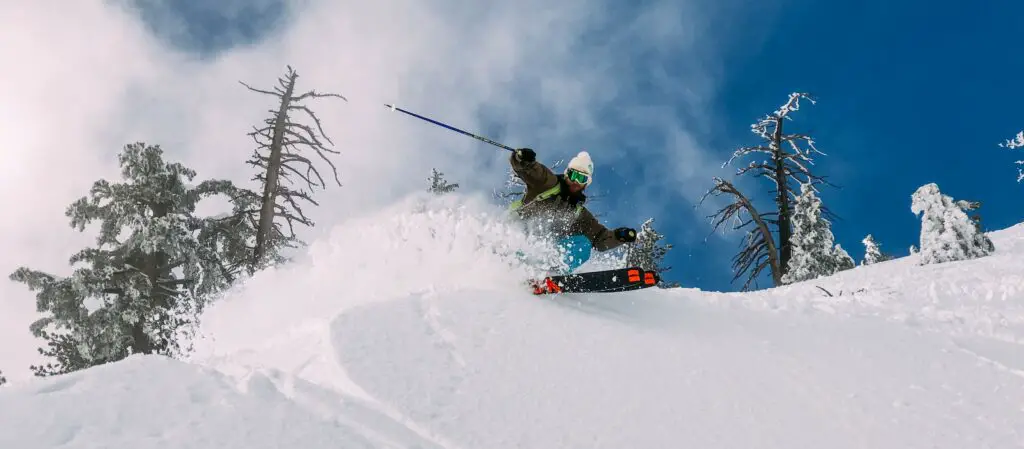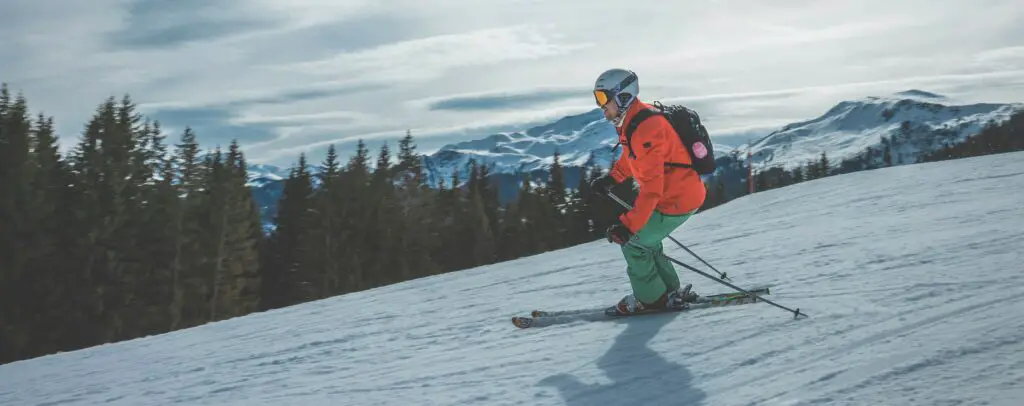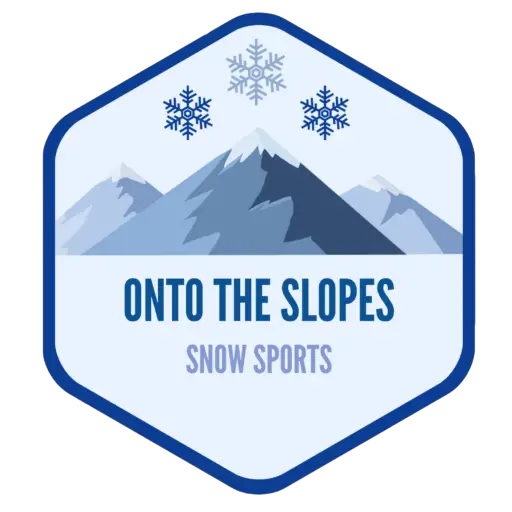Freeride and all-mountain skis are both designed to be versatile and work on different types of terrain, however there are several differences between them which makes them more/ less suitable for different scenarios.
Freeride vs All-Mountain Skis 101
All-mountain skis are usually slightly narrower, softer and have more camber compared to freeride skis which have more rocker. All-mountain skis are designed mostly for use on-piste but can also be used on un-groomed terrain. Freeride skis are mostly designed for use on ungroomed terrain/ powder.
| All-Mountain Skis | Freeride Skis |
| Designed for groomed and ungroomed terrain | Designed primarily for ungroomed terrain |
| Better for carving on-piste | Better on powder |
| Waist is usually between 90-100 mm | Waist is usually over 100 mm |
| Usually have more camber | Usually have more rocker |
| Moderate turning radius | Moderate-large turning radius |
| Suitable for all ability levels | Mostly designed for advanced skiers |
Freeride Skiing
Freeride skiing is performed on ungroomed terrain. It’s for skiers who want a challenge and already have a lot of experience as it is much more extreme compared to on-piste skiing.
Freeride skis need to perform on deep snow (powder) and are designed for use on the entire mountain. They are typically wide which allows them to float on powder, and have a profile with more rocker which helps the ski to float and makes it easier to maintain control on uneven terrain.
There are different types of freeride skis which each have their own pros and cons.
- Freeride skis with a moderate waist width (90-100 mm) and more rocker at the tip and less at the tail. They are very versatile and the most closely related to all-mountain skis.
- Freeride skis with a wider waist width (over 100 mm) are designed for use in powder primarily and do not work as well on-piste as slightly narrower skis. They also typically have more rocker at the tail end.
Freeride skis also usually have a longer turning radius (above 21 m) compared to other types of skis. This is created by a shallower sidecut. This helps the ski make bigger turns more smooth at high speeds however, some freeride skis have a more moderate turning radius to help manoeuvrability around trees.
In terms of flex, freeride skis usually fall into the moderate-stiff category with a flex rating between 5 and 8. This makes the ski feel stable for the more aggressive skier who is usually travelling at high speeds, but it’s not too stiff as otherwise that would make the ski perform poorly in powder.

All-Mountain Skiing
All-mountain skis, as the name suggests are designed to work well on a range of different terrains. They tend to have fairly moderate characteristics to make them suitable for use on both groomed and ungroomed pistes.
All-mountain skis typically have a moderate amount of flex so they are still good for carving but aren’t too harsh on bumpy terrain. They also usually have a moderate turning radius (15-22 m), a mix of rocker and camber profiling and are roughly 90-100 mm wide.
This allows the skis to work on powder as well as groomed pistes, however it’s worth noting that all-mountain skis are usually better on-piste compared to powder.
There is a lot of variation within the “all-mountain” category to cater for different ability levels and terrain. Some all-mountain skis are narrower and have a shorter turning radius making them better for carving than on powder. Alternatively, some all-mountain skis are wider and have a longer turning radius making them better for powder.

Characteristics of the Skis
- Flex
- Width
- Turning Radius
- Camber Profile
Flex
Freeride skis are usually stiffer compared to all-mountain skis which are softer and have a lower flex rating. This is because freeride skis are typically designed for more advanced skiers who are skiing more aggressively and the extra stiffness helps to provide more stability at high speeds.
Width
Freeride skis are wider than all-mountain skis which makes them more suitable for powder. A wider ski is required on powder as it allows them to float more compared to a narrower ski. All-mountain skis are typically narrower than freeride skis which makes them more suitable for carving on-piste.
Turning Radius
The turning radius of freeride skis is usually larger compared to that of all-mountain skis. A smaller turning radius is required for all-mountain skis to help with carving.
A larger turning radius on a pair of freeride skis means you can make bigger turns at higher speeds. However, the turning radius is not usually too large otherwise it would be harder to turn quickly around obstacles such as trees.
Camber Profile
Freeride skis typically have more rocker compared to all-mountain skis which usually have more camber.
Rocker is important on the tip of a freeride ski in particular as it helps it to float in powder, and absorb bumps which are common in ungroomed terrain.
All-mountain skis have a range of profiles but hey usually have more camber to increase edge hold and stability at high speeds which is useful on-piste and when carving.
Should You Buy All-Mountain or Freeride Skis?
To decide if you need an all-mountain or freeride ski, you should consider what type of terrain you’re skiing on.
If you mainly ski on-piste but want to occasionally try ungroomed trails, then all-mountain skis are more suitable. If you want to ski mostly on ungroomed trails and powder, but don’t want to completely limit yourself to a powder ski, then a pair of freeride skis will be your best bet.
If you are a beginner you will be better off using an all-mountain ski compared to a freeride ski as all-mountain skis work better on-piste which is where beginners usually spend their time.
Check out my in-depth comparison between carving and all-mountain skis.
